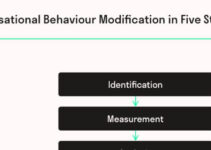ITIL (Information Technology Infrastructure Library) change management offers a systematic approach that companies follow to manage and control changes in their IT infrastructure and systems. The objective of ITIL change management is to reduce the negative effects of changes in the company’s operations while making sure that you properly plan, test, and execute the changes. Today, we’ll discuss ITIL change management risk assessment; its importance, and the steps involved in the process.
The ITIL change management outlines the method of risk analysis by recognizing and analyzing the potential risk factors attached with the change project. It allows companies to find the impact and likelihood of potential risk factors; it focuses on taking the right course of actions to reduce and manage the risks.
Importance of Risk Assessment in ITIL Change Management
Some of the top reasons for the importance of risk assessment in ITIL change management; they’re as follows;
- Necessary for the successful execution of ITIL changes before sending ITIL change request for the approval of changes
- Recognize any potential issues and take appropriate steps to remove them by performing a risk analysis before executing changes.
- Developing risk mitigation strategies like testing changes and creating backups in a controlled environment for training and monitoring
- Prioritizing changes based on the risk they pose to the company
- Allows companies to focus on the key changes that are necessary while managing the risk factors
- Risk assessment is a continuous process and they should update and review the company’s environment regularly.
- Makes sure the reliability and stability of the company’s IT system to decrease the negative impact of changes on the company’s operations
Process of ITIL Change Management Risk Assessment
Let’s discuss the main steps involved in the process of ITIL change management risk assessment; they’re as follows;
Recognizing Risk Factors
The risk identification process comprises recognizing and listing all the possible potential risk factors that would come to the surface due to the change project. Some of the main methods and strategies they could employ to recognize the potential risk factors are as follows;
- Impact Analysis: focuses on the potential impact of changes in various areas of the company like compliances, security, and changes to recognize the potential risk factors
- SWOT Analysis: studies the internal strengths and weaknesses; and external opportunities and threats of the company to know the risks
- Root Cause Analysis: studies the underlying causes and reasons of the previous problems and incidents to find out the risk factors
- Checklists: they employ a standardized checklist to recognize the potential risk factors based on previous experiences and the best industry practices
- Brainstorming: a group of people with relevant knowledge and expertise to recognize the potential risk factors
It is significant to keep in mind the multiple types of potential risk factors that would come up on the surface like compliance risks, operational risks, and technical risks. It comprises individuals from various departments with different types of skills and expertise to recognize the processes to make sure of a wide range of risk factors.
Analyzing the Impact of Recognized Risks
After recognizing the potential risk factors, here you need to analyze the potential impact of the risk factors; prioritizing risks and developing measures to reduce them. This stage comprises recognizing the occurrence probability of the recognized risks and their impact on the company if they happen. However, some of the main risk occurrence probability methods and strategies are as follows;
- Reputational Impact: studies the potential impact on the company’s and the brand’s reputation
- Compliance Impact: focuses on the potential impact in compliance with industry standards, country’s laws, and regulations
- Operational Impact: outlines the potential disruption and delays in the company’s operations like delays and service outages
- Financial Impact: estimates the potential cost and expenses attached with the risk factors like high expenses and losing revenue
- Scenario Analysis: recognizing the possible scenarios and events that would lead them to the occurrence of potential risks
- Probability Estimates: adding numerical value to the likelihood of the occurrence of potential risks like high, low, or medium
Prioritizing Risks Based on its Impact
The risk prioritization comprises of studying the likelihood of the occurrence of recognized risk factor and it poses to the company. The most common strategic approach of risk prioritization is to develop a risk matrix, it outlines the likelihood of the occurrence of potential risks and its impact on the company.
However, the risk factors that fall under the quadrants of high impact and high likelihood, they need a top priority because it poses a high risk to the company. If the risk falls under the quadrant of low impact and lower likelihood, then it needs a limited priority.
A scoring system is the other method of prioritizing the risks. Here, you assign a particular score to its likelihood and its impact on the company. The top score receiving would require and need a top priority.
Strategic Approaches to Reduce and Control the Risks
After recognizing and prioritizing the potential risk factors in the ITIL change management process, you should develop strategies to reduce and control the risk factors. Risk mitigation strategies help you decrease the impact and likelihood of risks; controlling strategies help you manage risks. However, some of the main risk mitigation and risk control strategies are as follows;
- Offering User Training: making sure that the user knows how to employ the new system and processes in case of executing changes.
- Developing Incident Response Plan: helping companies to quickly and effectively respond to the risk factors.
- Launching Additional Monitoring: detectingand responding to the changes more quickly
- Executing Redundancy: helps you to make sure that the critical system of the company keeps functioning continuously in case of occurrence of risk factors.
- Testing Changes in a Controlled Setting: recognizing and resolving potential issues before the execution of changes
- Creating Backup: helps you to make sure that you can restore the data in case of the occurrence of risks.
Execution of Strategies
The execution of strategies comprises taking the necessary steps to put the strategic approach into action and make them operational. It comprises of following strategies;
- Communicating and Developing Procedure: communicating and developing guidelines and procedures for executing strategies. It helps companies to correctly and accurately execute the strategies.
- Allocating Resources: recognizing and allocating potential resources like personnel and budget to execute strategies
- Allocating Task and Responsibilities: recognizing and assigning various roles and responsibilities to people in various departments
Conclusion: ITIL Change Management Risk Analysis | Risk Evaluation in ITIL Change Management
After an in-depth study of the ITIL change management risk assessment; we have realized that ITIL change management is highly significant for the change project. If you are learning about ITIL change management; then you should keep in mind the abovementioned process steps and the reasons for importance.
Ahsan is an accomplished researcher and has a deep insight in worldly life affairs. He goes Live 3 days a week on various social media platforms. Other than research writing, he’s a very interesting person.


